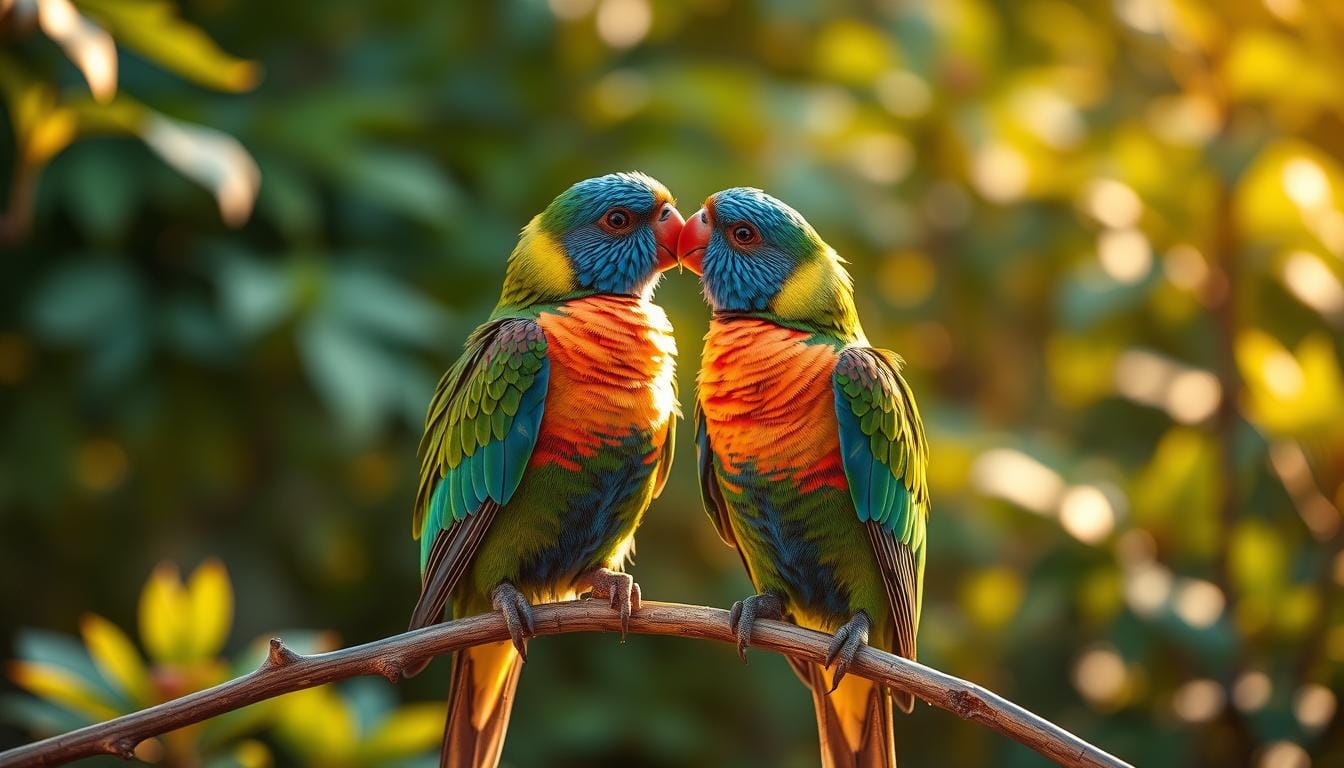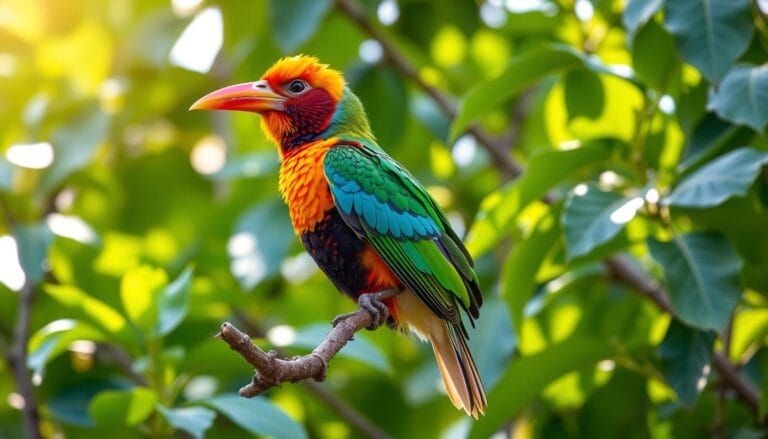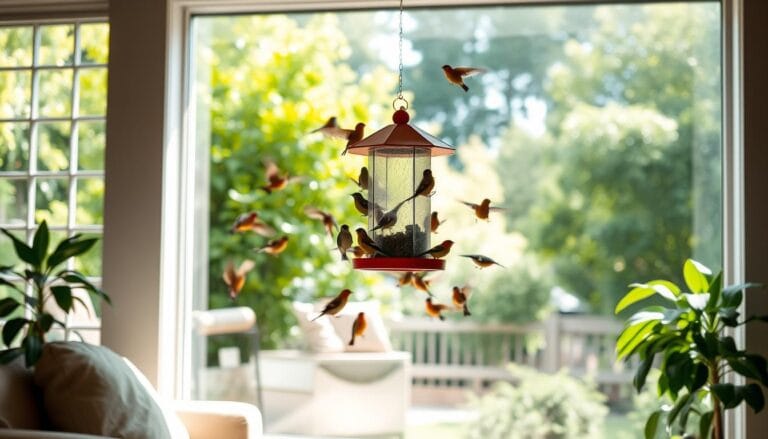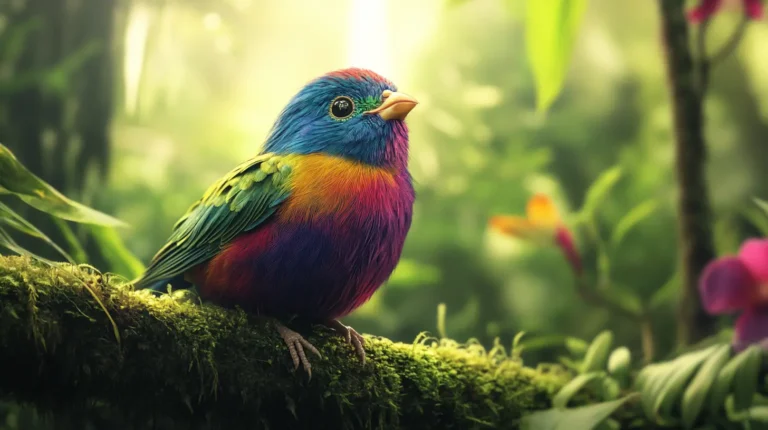How to Choose the Best Love Birds for Your Home
Thinking about getting a new pet? Many of us are drawn to love birds for their charm and beauty. With over 300 species of parrots, picking the right one can be tough. Lovebirds are America’s third most popular pet, known for their social nature and affection.
They can bring a lot of joy to our lives. In this article, we’ll explore the world of love birds. We’ll help you find the perfect feathered friend for your family.
Table of Contents
Key Takeaways
- Lovebirds are social animals that require significant attention and love to bond with their owners.
- The initial cost of a cage for a Lovebird can range from $250 to $1000, depending on quality.
- Lovebirds can live for 10 to 15 years, making them a long-term commitment for owners.
- There are many species of love birds to choose from, each with their unique characteristics and needs.
- Rescue groups often require prospective adopters to take bird-care classes before adoption.
- The average annual cost of maintaining a Lovebird can exceed several hundred dollars, depending on care needs.
Understanding Love Birds as Pets
Love birds are small, colorful, and social, making them great pets. They need a balanced diet, exercise, and social interaction. Experts say they’re not the easiest birds to care for, but with the right care, they can do well.
Creating a good environment is key for love birds. They need a big cage with perches, toys, and friends. Love birds are smart and can learn tricks and interact with people. There are over 9 lovebird species, but only a few are common pets like peach-faced, masked, and Fischer’s lovebirds.

It’s important to know the specific needs of each lovebird species. Some need lots of attention, while others are okay alone. Understanding these needs helps owners give their love birds the best care. With proper care, love birds can live up to 12-15 years or more, making great long-term friends.
Some key things to consider when caring for love birds include:
- Providing a balanced diet that includes a variety of fruits, vegetables, and formulated diets
- Ensuring adequate exercise and social interaction
- Creating a safe and comfortable environment with plenty of perches and toys
- Regularly cleaning and maintaining the cage to prevent diseases
By following these guidelines and understanding the unique needs of love birds, owners can provide the best possible care. This ensures a happy and healthy relationship. Whether you’re new to bird ownership or have experience, with the right knowledge and care, you can enjoy the companionship of these beautiful and social creatures.
Popular Love Bird Species for Beginners
Choosing a love bird species can be exciting for beginners. They look for birds that are easy to care for and handle. The peach faced lovebird and the parakeet are great choices. They are gentle, affectionate, and easy to manage.
These birds can live for 10 to 15 years. This makes them wonderful long-term companions.
When picking a love bird, consider their size, weight, and how much interaction they need. Lovebirds need at least a few hours of interaction daily. Finches, on the other hand, like to socialize with other finches more than humans.
Here are some popular love bird species for beginners:
- Peach faced lovebird: 5-7 inches in length, 2 ounces in weight, and a lifespan of up to 15 years
- Parakeet: 6-8 inches in length, 1 ounce in weight, and a lifespan of 7-15 years
- Cockatiel: 12-13 inches in length, 3 ounces in weight, and a lifespan of 15-20 years
It’s important to research each species’ needs to give them the best care. By choosing the right species for your lifestyle, you can create a happy home for your love bird.
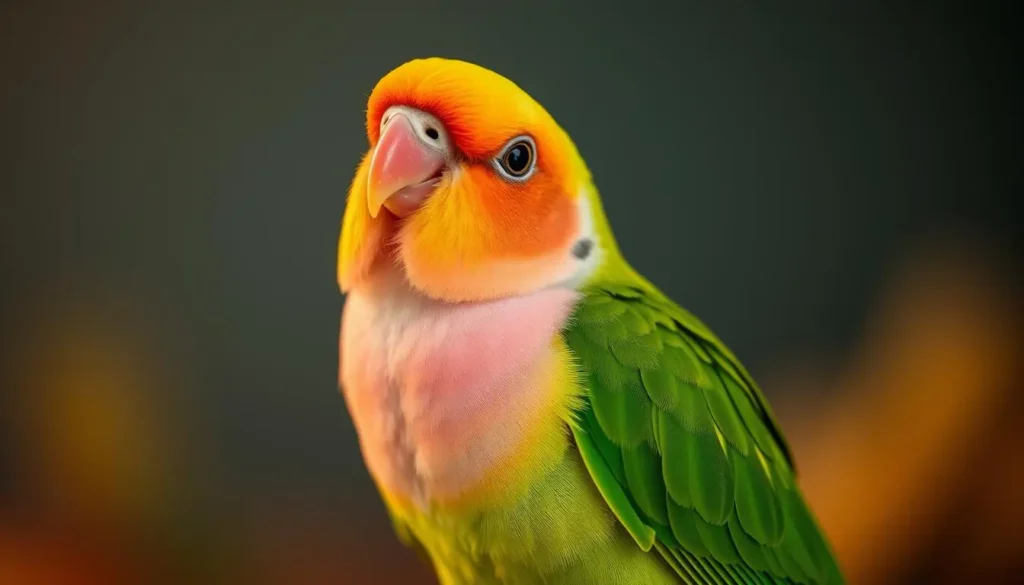
The Perfect Home Setup for Love Birds
Creating a cozy and safe space for your love birds is key. They need a big, well-ventilated cage. The cost of a large cage can be between $250 to $1000, depending on size and quality.
A good cage for love birds should be at least 18x18x18 inches for one bird. For a pair, it should be 24x18x24 inches. The bars should be no more than ½ inch apart to prevent escape or injury. The cage should also have different perches and accessories like swings, chew toys, and food/water bowls.
Cage Size and Requirements
Love birds need a cage that lets them fly and exercise. A big cage with varied perches and textures keeps them entertained. Make sure the cage is away from direct sunlight and has good airflow for a healthy environment.
Essential Equipment
Love birds need lots of toys and accessories to stay happy and healthy. They need food and water dishes, perches, swings, and chew toys. Always have fresh water available, and add bird-specific vitamin supplements to their water or food.
Creating a Safe Environment
Keeping your love birds safe is vital for their health. Clean the cage regularly, removing droppings daily and disinfecting weekly. By following these steps, you can ensure your love birds live a happy and healthy life.
Health Considerations When Choosing Love Birds
When picking love birds, think about their health first. Learn about their needs and possible health issues. Regular vet visits and a good diet can keep them healthy for a long time.
Lovebirds can live over 15 years with the right care. Feed them 60–70% high-quality pelleted food. Give fruits and veggies in small amounts and throw them away after 10 hours if not eaten.
Lovebirds need yearly vet checks. A healthy bird has regular droppings and shiny feathers. Watch out for feather picking, beak and feather disease, and chlamydiosis. Proper care can make your lovebirds happy and healthy.
Lovebirds can be great pets with the right care. They are 5 to 7 inches long and need a big enough cage. The right environment and care can help them live a long, healthy life.
Cost of Love Bird Ownership
Thinking about getting love birds? It’s key to know the costs involved. The initial buy, monthly upkeep, and vet bills are all important. The first cost can vary from nothing to over $150, based on the bird and where you buy it.
Adoption fees can start at $20, but buying from a breeder might cost $25 to $1,500. Some popular birds like Peachface and Masked Lovebirds can cost $150 and $160, respectively. Don’t forget the cost of basic supplies, which can be $30 to over $200.
Monthly, you’ll spend $10 to $20 on litter and $10 to $25 on food. Health care can cost $50 to $5,000 a year, depending on the bird’s health. It’s important to think about these costs to give your love birds the best care.
Here are some estimated costs to consider:
- Initial purchase expenses: $0 to over $150
- Monthly care costs: $30 to $45
- Veterinary care budget: $50 to $5,000 annually
Knowing the costs helps us make better choices. This way, we can give our love birds the love and care they need.
Signs of a Healthy Love Bird
When we talk about the lovebird lifespan and love birds care, knowing a healthy bird is key. A healthy love bird has bright, alert eyes and shiny feathers. They are lively and full of energy.
Regular vet visits and a good diet are vital. They help prevent health issues and ensure a long, happy life. Experts say a healthy bird’s droppings should be black or dark green, with a clear and creamy white part. Their weight should match their species, with a palpable but not sharp keel.
Here are some signs of a healthy love bird:
- Bright and alert eyes
- Shiny and well-groomed feathers
- A lively and active personality
- Normal droppings and appetite
- Appropriate weight for its species
By watching these signs and giving the right love birds care, you can keep your love birds happy and healthy. This way, you can enjoy a long and fulfilling time with your pet.
Training and Socialization Requirements
Training and socialization are key for a happy, healthy bond with your love birds. These birds are smart and need attention to avoid boredom and bad behaviors. Give them lots of toys and perches to keep them busy and happy.
Training sessions should be short, 10-15 minutes, to keep their focus. Use treats or praise to reward them. This method works well because love birds love rewards. Teach them commands like “step-up” and recall to keep them safe and free.
Regular training leads to better behavior and a stronger bond. Celebrate small wins to keep them motivated. Never use punishment, as it can harm your relationship with them. Spend time training and socializing to create a loving bond with your love birds.
Here are some tips for training and socializing your love birds:
- Give them lots of toys and perches to keep them busy and happy
- Use treats or praise to reward good behavior
- Practice recall training to keep them safe and free
- Avoid punishment or negative reinforcement to protect your bond
Dietary Needs and Feeding Guidelines
Lovebirds need a balanced diet to stay healthy. They should eat a mix of seeds, fruits, veggies, and a good commercial pellet. Always keep fresh water ready. A cuttlebone or mineral block adds important minerals.
A lovebird’s diet should be 60-80% pellets and 20-40% other foods. It’s also important to note that seeds should be a small part of their diet. Good food choices include Lafeber’s NutriBerries and Johnston and Jeff Premium Parakeet Mixture.
Here are some tips for feeding your lovebirds:
- Provide a variety of fruits and vegetables, such as carrots, kale, and broccoli
- Offer sprouting seeds, which can be soaked for a couple of days before serving
- Include treats, such as Parrot Cafe Treats and Vitapol treat sticks, in moderation
By following these dietary needs and feeding guidelines, you can help ensure your lovebird species receive the proper love birds care and nutrition they need to thrive.
Common Challenges of Love Bird Care
When we care for love birds, we face some challenges. But with the right care, we can avoid many of these problems. For example, peach-faced lovebirds might scream or pluck their feathers if they’re not social enough or don’t have enough to do.
Lovebirds can also get sick, like respiratory issues or parasites. A good diet and regular vet visits can help prevent this. Also, making sure their cage is big enough and has lots of toys and perches is important. Experts say lovebirds can show signs of being unhappy or sick, so we need to watch for these signs.
Here are some important things to remember when caring for love birds:
- Give them a healthy diet that fits their needs
- Make sure they have enough friends and things to do
- Take them to the vet regularly to catch health problems early
- Keep their home safe and comfy
Knowing about these challenges and how to avoid them helps us care for our love birds well. With the right care, we can enjoy their company for many years.
Breeding and Pairing Considerations
When we talk about breeding and pairing lovebird species, it’s key to think about their needs. In the world of love birds care, it’s vital to breed responsibly. This ensures the health and happiness of these lovely birds.
Experts say captive lovebirds can start breeding at 8 months old. But, this is seen as irresponsible. Responsible breeders wait until lovebirds are at least 2 years old to breed.
Some important things to consider when breeding and pairing lovebirds include:
- Providing a suitable environment, including a spacious cage and a balanced diet
- Ensuring the health and well-being of the female lovebird, as young females are at a higher risk of becoming egg bound or suffering from other egg-laying complications
- Limiting light exposure to 8-10 hours per day to discourage breeding
- Providing a resting period of at least 6 months, preferably a year, for overbred pairs to recover
By following these guidelines and focusing on the health of lovebird species, we can ensure our care practices are responsible and effective.
Remember, breeding and pairing lovebirds need careful thought and attention. By doing our research and focusing on their needs, we can create a happy and healthy home for our love birds to flourish.
Where to Buy Love Birds
When looking to buy love birds, it’s important to think about where you get them from. Look into reputable breeders, pet stores, and rescue groups. Each has its own benefits and drawbacks. It’s key to ask the right questions to make a good purchase.
Remember, love birds can live up to 20 years in captivity. With the right care, they can become wonderful pets. The price of a love bird varies, depending on its color, age, and how it was raised. Prices can range from $45 to $200.
Pet stores, bird specialty stores, breeders, and rescue groups are good places to find love-birds. If you buy from a breeder, ask about the bird’s age and health. Also, make sure you get the proper documents. Hand-raised love-birds are great for beginners because they are less likely to bite and are more used to being handled.
Here are some important things to think about when buying a love bird:
- Research the seller and ask for references
- Ensure the bird is healthy and well-socialized
- Ask about the bird’s diet, habitat, and care requirements
- Consider the cost of shipping and any additional expenses
By carefully choosing a reputable seller and asking the right questions, you can get a happy and healthy love bird. With nine different lovebird species to choose from, you’re sure to find the perfect pet for your love birds care journey.
Conclusion: Making the Right Choice for Your Family
As we wrap up our look into love birds, we hope you’re ready to choose the best for your family. Whether you’re captivated by lovebirds or parakeets, these birds can add joy and happiness to your home.
Success with love bird ownership comes from caring for them well. This means creating a loving space, feeding them right, and taking them to the vet often. This way, your love-birds will stay healthy and happy, and you’ll build a strong bond with them.
So, spend time learning and asking questions to find the perfect love-birds for you. With the right care, you’ll welcome these wonderful birds into your life. You’ll make memories that will last forever.
FAQ
What makes love-birds unique as pets?
Love-birds are small, colorful, and very social. They are smart and can learn tricks. They also love to interact with their owners.
What are some popular love bird species for beginners?
Beginners often choose peach-faced love-birds for their gentle nature. Parakeets are also popular because they are small and easy to care for.
What are the essential considerations for creating a safe and comfortable environment for love-birds?
Love-birds need a big cage with good air flow. They also need food and water dishes, toys, and perches. These things keep them happy and healthy.
What are the common health concerns for love-birds?
Love-birds can get sick with breathing problems and parasites. Taking them to the vet regularly and feeding them well can prevent these issues.
How much does it cost to own love-birds?
Owning love-birds is a big commitment. It includes buying them, monthly costs, and vet bills. Make sure you can afford it to keep them happy and healthy.
What are the signs of a healthy love bird?
A healthy love bird has bright eyes, shiny feathers, and is full of energy. They should be lively and active.
How important is training and socialization for love-birds?
Training and socialization are key for love-birds. They are smart and need attention. Give them toys, create a routine, and spend time with them for a happy relationship.
What should be included in a balanced diet for love-birds?
Love-birds need a mix of seeds, fruits, veggies, and a good pellet. Always have fresh water ready. A cuttlebone or mineral block adds important minerals.
How can I address common behavioral issues in love-birds?
Issues like screaming and feather plucking can happen. A big cage and lots of toys and perches can help prevent these problems.
What should I consider when buying love-birds?
When buying love-birds, look for reputable sources. Ask about the birds’ health and age. Make sure you get the right paperwork for a smooth purchase.
There are no reviews yet. Be the first one to write one.

